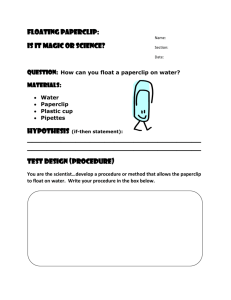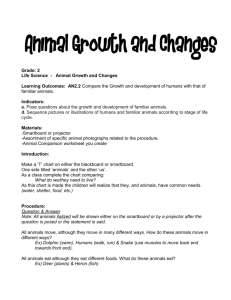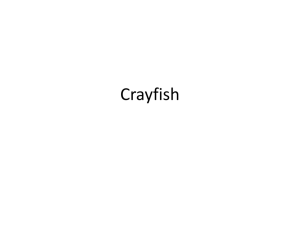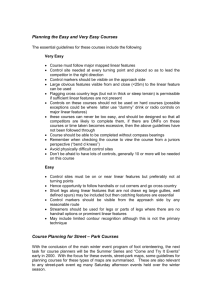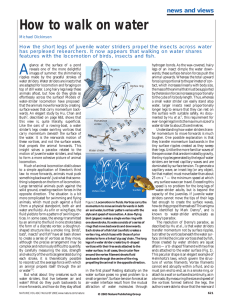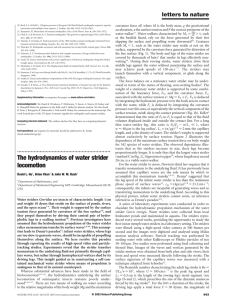Water-Walking
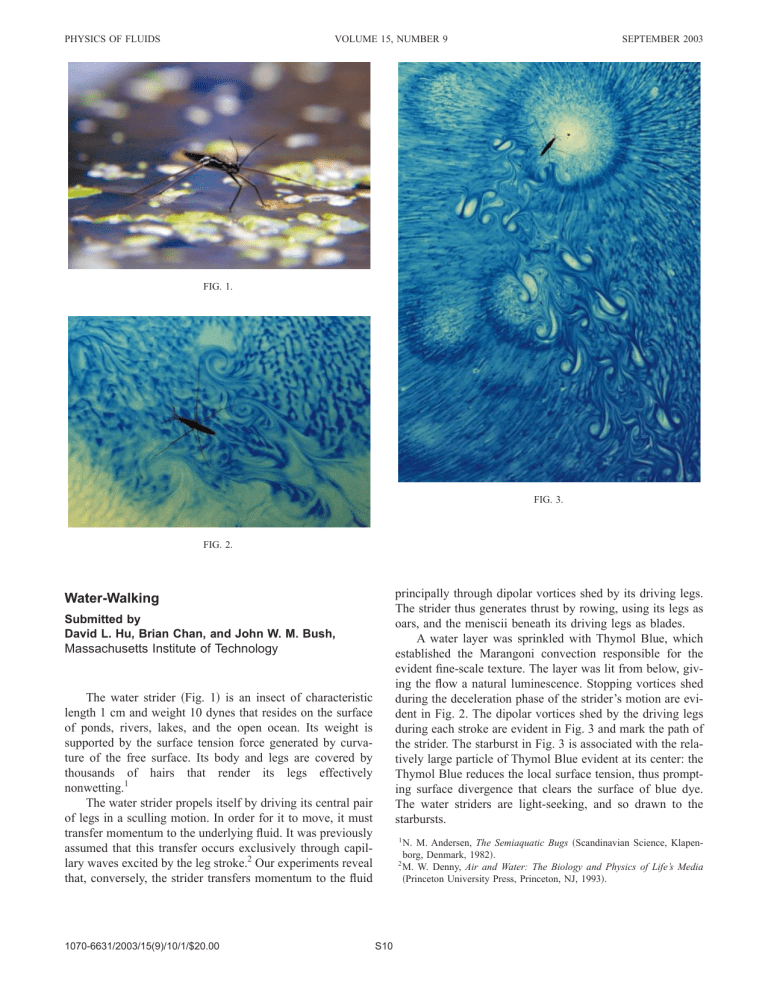
PHYSICS OF FLUIDS VOLUME 15, NUMBER 9 SEPTEMBER 2003
FIG. 1.
FIG. 3.
FIG. 2.
Water-Walking
Submitted by
David L. Hu, Brian Chan, and John W. M. Bush,
Massachusetts Institute of Technology
The water strider
共
Fig. 1
兲 is an insect of characteristic length 1 cm and weight 10 dynes that resides on the surface of ponds, rivers, lakes, and the open ocean. Its weight is supported by the surface tension force generated by curvature of the free surface. Its body and legs are covered by thousands of hairs that render its legs effectively nonwetting.
1
The water strider propels itself by driving its central pair of legs in a sculling motion. In order for it to move, it must transfer momentum to the underlying fluid. It was previously assumed that this transfer occurs exclusively through capillary waves excited by the leg stroke.
2
Our experiments reveal that, conversely, the strider transfers momentum to the fluid principally through dipolar vortices shed by its driving legs.
The strider thus generates thrust by rowing, using its legs as oars, and the meniscii beneath its driving legs as blades.
A water layer was sprinkled with Thymol Blue, which established the Marangoni convection responsible for the evident fine-scale texture. The layer was lit from below, giving the flow a natural luminescence. Stopping vortices shed during the deceleration phase of the strider’s motion are evident in Fig. 2. The dipolar vortices shed by the driving legs during each stroke are evident in Fig. 3 and mark the path of the strider. The starburst in Fig. 3 is associated with the relatively large particle of Thymol Blue evident at its center: the
Thymol Blue reduces the local surface tension, thus prompting surface divergence that clears the surface of blue dye.
The water striders are light-seeking, and so drawn to the starbursts.
1
2
N. M. Andersen, The Semiaquatic Bugs
共
Scandinavian Science, Klapenborg, Denmark, 1982
兲
.
M. W. Denny, Air and Water: The Biology and Physics of Life’s Media
共
Princeton University Press, Princeton, NJ, 1993
兲
.
1070-6631/2003/15(9)/10/1/$20.00
S10


